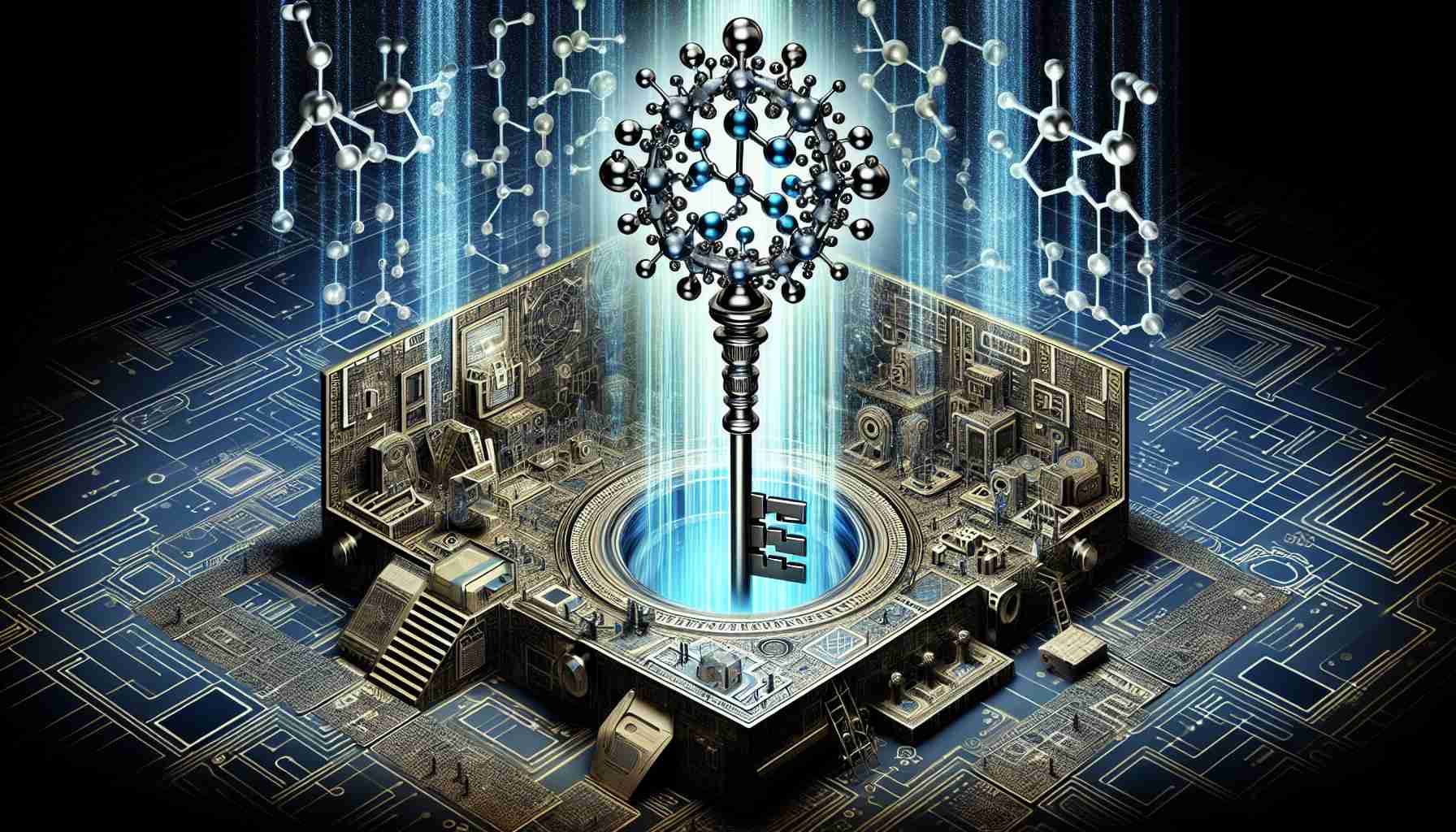- Chiral molecules could revolutionize electronics by manipulating electron spin more efficiently.
- Electrons have a property called spin, which can enhance data storage technologies.
- Traditional methods for aligning electron spins have relied on ferromagnetic materials.
- Researchers developed a hybrid system combining gold films with chiral molecules for improved spin-to-charge conversion.
- Right-handed and left-handed chiral molecules offer distinct properties in electron spin management.
- Advancements in spin selectivity could lead to significant improvements in spintronic devices.
- This research highlights the potential of chiral molecules in paving the way for innovative electronics technology.
Imagine a world where tiny particles like electrons could be manipulated effortlessly, transforming the landscape of electronics as we know it. Researchers at Johannes Gutenberg University Mainz are on the brink of this breakthrough! They are exploring the mesmerizing world of chiral molecules, unique structures that could rival traditional magnets in controlling electron spin.
Electrons aren’t just negatively charged; they possess a mystical property known as spin, a magnetic moment that could significantly enhance data storage technologies. However, directing this spin has often been a daunting challenge for scientists. Traditionally, ferromagnetic materials like iron have been used to align electron spins, but chiral molecules—shaped like spirals—are emerging as a captivating alternative.
In their innovative experiment, scientists created a hybrid system combining a gold film with chiral molecules. This extraordinary setup allows electrons with right-handed molecules to convert spin into charge more efficiently when they’re oriented “spin-up,” while left-handed molecules do the opposite, offering a fascinating twist on conventional physics.
The implications of this discovery are enormous; achieving spin selectivity through these chiral structures could lead to groundbreaking advancements in spintronic devices, paving the way for faster, more efficient electronics. As Professor Angela Wittmann puts it, this research not only validates the potential of chiral molecules but also opens the door to a new realm of spin-based technology.
In a nutshell, the future of electronics may lie in the whimsical shape of these chiral molecules, promising a shift from traditional methods to a more innovative approach in managing electron behavior! Stay tuned—this is just the beginning of something extraordinary.
Unlocking the Future of Electronics: Chiral Molecules and Spintronics
Understanding Chiral Molecules and Spintronics
Researchers from Johannes Gutenberg University Mainz are pioneering the use of chiral molecules to manipulate electron spin, a technology that could redefine the electronics landscape. These unique structures, characterized by their spiral shapes, offer a promising alternative to traditional ferromagnetic materials in controlling electron behavior. This shift could enhance data storage technologies and lead to more efficient electronics.
Key Insights and Innovations
1. Spin Selectivity: The breakthrough of using chiral molecules lies in spin selectivity. Different chiral structures—right-handed and left-handed—offer unique properties for managing electron spins. This could lead to devices that operate faster and consume less power compared to existing technologies.
2. Hybrid Systems: The researchers’ innovative approach involves combining a gold film with chiral molecules, creating hybrid systems that improve the efficiency of electron spin-to-charge conversion, marking a significant advancement in spintronic technology.
3. Applications in Electronics: The implications of this research extend to various applications, including improved data storage, faster computing, and potential developments in quantum computing due to enhanced spin control.
Pros and Cons of Using Chiral Molecules
– Pros:
– Improved efficiency in electron spin manipulation.
– Potential to revolutionize data storage technologies.
– Opportunities for advancements in quantum computing.
– Cons:
– Still in experimental stages; commercial applications are not yet available.
– Complexity in synthesizing and manipulating chiral molecules.
Key Questions
1. What is the significance of spin selectivity in electronics?
Spin selectivity allows for the precise control of electron spins using chiral molecules, leading to new functionalities in electronic devices, which could dramatically improve data processing and storage capabilities.
2. How does this hybrid system work?
The hybrid system uses chiral molecules, which can control the direction of electron spins, to convert these spins into electrical charge more efficiently when combined with a conductive substrate like gold.
3. What are the potential future applications of this research?
Future applications include advanced spintronic devices, enhanced data storage systems, and possibly components for quantum computers, which require sophisticated means of manipulating quantum states.
Pricing and Market Trends
As research progresses, the cost of developing spintronic devices using chiral molecules could gradually decline, paving the way for commercialized applications within the next decade. Market forecasts indicate a growing demand for spintronic technologies in computing and data storage sectors, positioning these innovations favorably in the electronic market landscape.
Sustainability and Security Aspects
The exploration of chiral molecules in electronics could lead to more sustainable practices in the electronics industry by reducing material usage and energy consumption in data centers and devices. Additionally, as these technologies develop, they may offer enhanced security features through sophisticated data handling techniques enabled by spintronics.
For more information, you can explore Johannes Gutenberg University Mainz.













